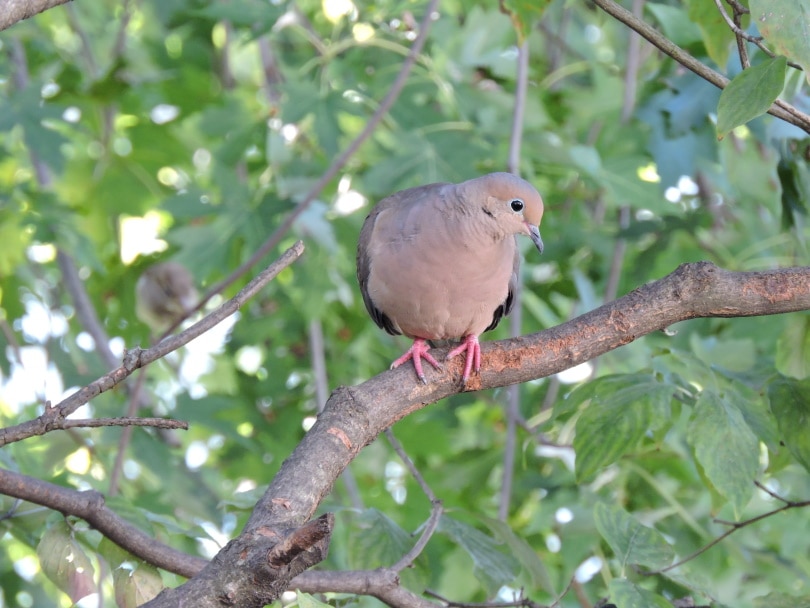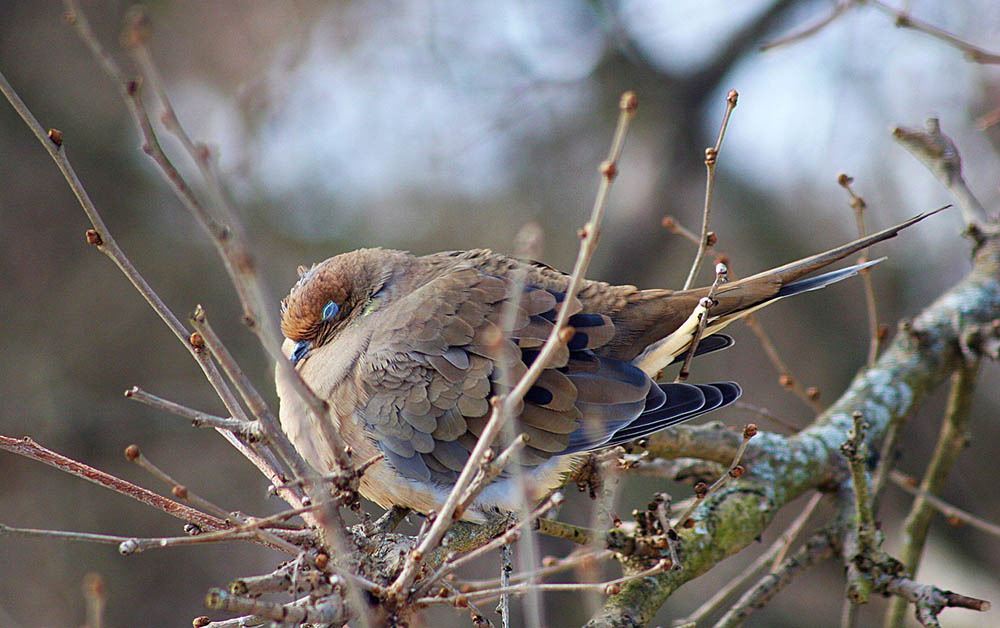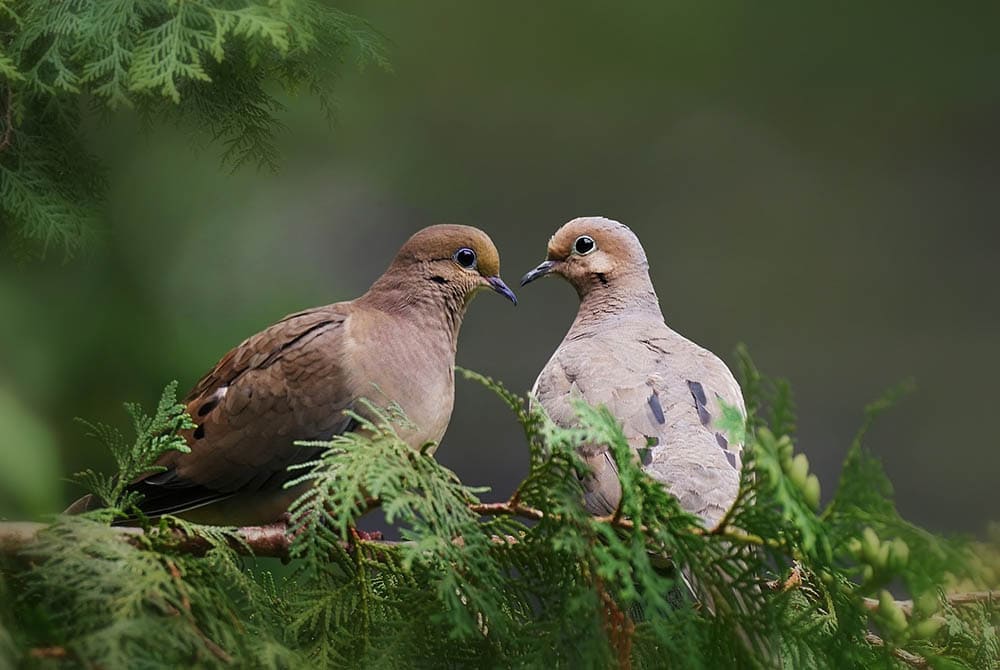Where Do Mourning Doves Sleep? What You Need to Know
Last Updated on

Mourning doves are commonly seen in parks, outside your window on a fine spring morning, and even perching on powerlines on your way to work. They are beautiful birds that never fail to make you smile when you see one. However, have you ever wondered where Mourning doves sleep when they aren’t hopping around on the ground searching for food and looking pretty?
We’ll answer that question and more below.

Where Do Mourning Doves Sleep?
Mourning doves usually seek shelter in places where predators can’t see them. In most cases, this includes dead trees, nest boxes, chimneys, and trees that border the inside edges of fields.

How Do Mourning Doves Choose Where to Sleep?
Mourning doves tend to choose a roosting location based on the temperature. They have fragile bodies, and they require a habitat that will keep them warm. Of course, winter is a challenge for the Mourning dove since they require a site that’s warm enough for their eggs to incubate. Freezing temperatures can easily kill Mourning doves that cannot find adequate shelter.
Since the Mourning dove also has to choose a nesting location that’s safe from predators, they often sleep inside of dead trees and tree trunks.
How Do Mourning Doves Sleep?
Mourning doves don’t sleep in the same way as other birds. Instead, they sleep with their head resting between their shoulders instead of tucked away inside. Even if they are in a safe place, they’re wary of nearby predators and sleep with their eyes open to look for danger.
Doves are very social and hang out together in groups. They protect and care for each other in pairs, small groups, and flocks.
Mourning doves mate with one partner every season until one of them dies. The female sleeps at night, while the male sleeps during the day. They also gather in flocks larger than most breeds, numbering 10 to 60 birds.

How to Set Up a Comfortable Sleeping Cage for a Mourning Dove
If you’re a bird lover, you might want to set up a comfortable sleeping cage for the Mourning doves you see in your yard every morning. If you’re trying to attract the Mourning birds to your property, avoid raking up twigs, pine needles, and grass clippings to attract them to your yard. This will encourage them to use the materials to build a nest in your yard.
You can also try putting up a bird feeder for the Mourning doves, making it easy for them to go between their nest and their food while still feeling safe. Stock the feeder with sunflower seeds, millet, and wheat for the best results.
The environment the bird sleeps in should be comfortable, quiet, dark, isolated, and away from possible predators. If your sleeping cage provides that, and you have enough food, then the Mourning doves may make it their permanent home.


Final Thoughts
This concludes our guide on where Mourning doves sleep, their habits, and what you can do to provide them with a safe, comfortable place to sleep. Mourning doves are gorgeous creatures that deserve to be protected and loved, just as any other creature on earth. Don’t you agree?
Featured Image Credit: Piqsels
About the Author Patricia Dickson
Patricia is an animal and coffee writer and a published author under the pen name Skylar McKinzie. When she isn’t writing, Patricia enjoys spending time with her two cats and dog. Since she was a young child, she has been a pet lover and enjoys nothing more than cuddling with her pets. Patricia loves sharing her knowledge of animals and finds joy in helping out at the local rescue shelter whenever she can.
Related Articles:
10 Types of Hummingbirds in Arkansas (With Pictures)
8 Types of Hummingbirds in Nebraska (With Pictures)
5 Types of Hummingbirds in Idaho (With Pictures)
3 Types of Hummingbirds in Mississippi (With Pictures)
8 Types of Hummingbirds in Kansas (With Pictures)
5 Types of Hummingbirds in West Virginia (With Pictures)
5 Types of Hummingbirds in Ohio (With Pictures)
Where Do Nuthatches Nest? Nuthatch Nesting Habits Explained
